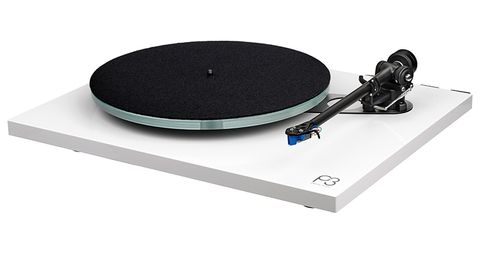Vinyl was in its harvest years in 1975, a decade after stereo LP became widely used in the United States. Mike Oldfield, Pink Floyd, and Electric Light Orchestra broke sales records with their mega-selling albums and extravagant packaging, while Queen and Wings sold previously unheard-of volumes of 7 singles. Vinyl seemed to have no competition; open reel was for studio usage and police monitoring, cassettes were for vehicles, and radio, aside from Radio 3 FM, couldn’t match vinyl’s soaring sonics…
The turntable breed had already grown into what we know it as now by the mid-1970s. In 1972, the first Technics SL-1200 was released, enabling direct drive in a packaging that was significantly more cheap than the broadcast-standard 1969 model SP-10, which was where the technology initially appeared. For Japanese producers, the race was on to make the technology available in ever-more-affordable goods. Only inexpensive turntables, such as Pioneer’s incredibly small PL-12, were belt driven by 1975, in stark contrast to the UK audiophile market, which was dominated by belt driven Thorens-type machines.
However, Sony’s 1975 collection had a unique twist. The mid-priced PS-4750 and higher-end PS-6750 were direct-drive, as expected, but the magnificent PS-8750, with direct drive and a ‘X-tal Lock,’ sat at the very top. This was Sony jargon for quartz lock, a brilliant modification to the direct-drive method that added complexity while allowing it to attain vanishingly low wow and flutter statistics, as well as the related rock-solid speed stability.
The turntable’s servo control system featured two independent circuits: one was a regular servo, and the other was a switchable quartz lock. During operation, the latter was unaffected by voltage or temperature swings, resulting in astounding wow and flutter measures of 0.025 percent WRMS, while it was previously thought that the ear couldn’t perceive much more than 0.1 percent. The device functioned by using a ‘tape head’ that was mounted just inside the rim of the 320mm diecast metal platter, which had a magnetized inside rim. This supplied pulses to the magnetic head, which in turn fed them into the servo control circuitry in real time, indicating whether the deck was moving slowly or quickly. The ‘X-tal lock’ system featured its own quartz crystal, oscillating at a very accurate frequency, which provided a ‘fixed’ reference time independent of the mains.
The system performed flawlessly, providing an immediate (although modest) enhancement in sound as well as a terrific showroom selling point. Ironically, Sony’s implementation of the direct drive system in its high-end decks was so good that the ‘X-tal Lock’ was only marginally effective; the cheaper PS-6750 also produced solid and pitch-accurate sound, but the quartz crystal was the crowning glory of a turntable that was the Sony Corporation’s biggest, most expensive, and best hi-fi turntable ever – until the arrival of the later (and arguably inferior sounding) Biotracers.
The presentation demonstrates how the Japanese may produce a residential hi-fi device with the precision of a military-grade precision equipment. The direct drive motor’s high torque swiftly spun the platter up to speed, and a built-in brake circuit quickly stopped the turntable when the stop or refuse buttons were pressed. When hand cueing, the 237mm statically balanced tonearm’s jewelled trunnion mount and carbon-fiber arm and headshell reminded me of Japan’s finest cameras; the lift-lower mechanism even featured its own silent motor! There was a photo-electrically activated end-of-side auto stop to save the (undoubtedly expensive) stylus on your phono cartridge if you couldn’t get it out of its worn groove.
The finery doesn’t stop with the drive mechanism and tonearm; the deck is comprised of a mix of materials, with polished aluminium around a frame made of Sony’s ‘SBMC’ material. Even the dustcover was stunning: thickly smoked acrylic with a ‘anti-static’ metal grid insert — it reminded me of a heated rear window in a car! It’s also a big beast, measuring 458x184x395mm and weighing 14.2kg. All of this resulted in an astronomically costly turntable with precision and quality that put practically every British deck to shame.
The Sony is clean and open acoustically, with little coloring over the frequency spectrum. With an unerringly firm and gripping bass, a wonderful smooth high treble, and a neutral, wide, and expansive midband, it has the sensation of a sensitive, finessed performer. It’s without a doubt one of the best-sounding integrated turntables ever built, only being surpassed by more expensive and complex machines that came after it several years later, such as Kenwood’s Lo-7D. The PS-8750 is a rare turntable that is unlikely to be found for £15 in your local classified advertising. However, despite their exorbitant price when new, they occasionally turn up for less than the price of a large Technics.







